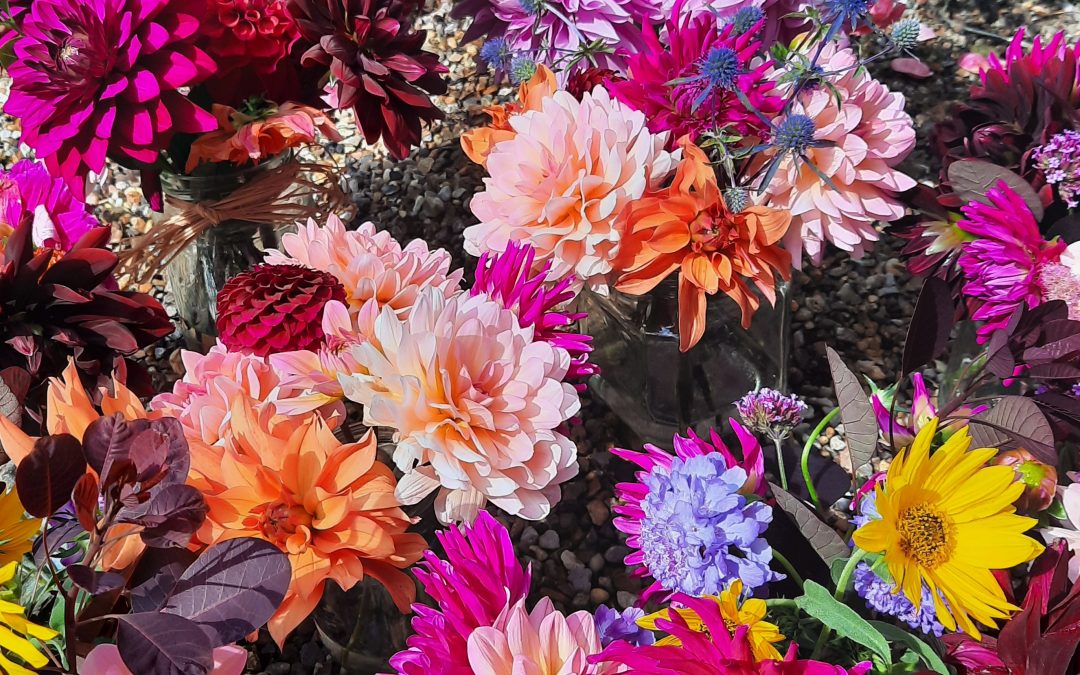Community Garden Update July 22
July has been a mixed month in the garden. The temperate, moderate summer that we had experienced from May, through June and until around the 10th of July gave way to a raging, scorching beast of a heatwave, which caused leaves to wilt, lettuces to bolt, and growers to despair. Dry heat is tough on any gardener, but a vegetable grower will feel it keenly, as they are trying to produce crisp, edible produce, which is, after all, 90% water! The 5000 litre rainwater tank has done us proud though – I’m writing on July 14th, and it has not yet run out (though a climb up the ladder and a squint into the tank shows that there isn’t long left). I have applied for a grant from the Special Chess Water catchment project to run the garden at peak water efficiency, and if we are successful, I would like to increase our water catching capacity. Putting water into the system is one solution, and preventing it leaving is the other. Whilst we can do nothing to halt the transpiration stream from soil through plant to atmosphere, we can prevent evaporation from the soil by MULCHING heavily. This also benefits the army of organisms living in the soil, as they all require moisture to function. Mulch can be made of any number of materials, including that old allotment chestnut – old carpet (please don’t!). the best mulches, however, feed the soil as well as suppressing weeds and vastly reducing evaporation. The gold standard is a rich, dark and crumbly home made compost – the ultimate in recycling and circular material use – but you can also use grass cuttings, leaves, woodchips, and even weeds – I often use the ‘chop and drop’ method, whereby you pull up weeds (preferably not flowering), chop them into smaller pieces if you have time, and pile them round the base of treasured plants. You could go a step further, and grow some large leafy plants solely for this purpose – comfrey is a great example – it sports huge leaves that accumulate minerals from deep horizons of the soil, due to its immense tap root. They snap off easily, and provide a protective blanket that slowly rots down, feeding the soil underneath, and keeping in the precious moisture.
This month, the Community Garden said goodbye to the 6 interns from Mission EmployAble, as their year’s course has come to an end. We are already missing them, for their hard work, and their good company. A new group will be with us in September – please do come and say hello if you see them around.
Hopefully you have been stocking your fridges with fruit and veg from the Garden for the last few weeks – we’ve had raspberries, strawberries, blackberries as long as a toddler’s finger, tayberries, courgettes, french beans, cucumbers, and of course, salad bags and flowers. Thank you so much for supporting the garden with your custom – income from the produce is split between the garden and Sarratt Stores, and the garden is well on it’s way to becoming financially self sustaining. It’s interesting to see what sells, and what languishes on the shelf. I thought that Tayberries would not make the cut – they are a grower and retailer’s nightmare; armed with prickles, loved by blackbirds, at their best to eat when they are a dull dark red, and a bit soft – so much so that a bikeride home can result in a pot of indistinguishable red pulp! However, they taste AMAZING! They are a hybrid between a blackberry and a raspberry, with the red of a raspberry, and much of its flavour, but the solid middle and vigour of a blackberry. When made into a jam, they go a deep red with hints of purple, and when eaten raw, they taste like a raspberry with flowers (?!). They can replace a raspberry or a blackberry in any recipe, and are great additions to a smoothie, if that’s your thing..
They have flown off the shelf, and sadly their season is now over, but I have more plants that will mature next year.
In the meantime, bring on the DAHLIAS! The Garden is a riot of colour, begging to be picked. You’ll find flowers and salad in the Shop Monday to Saturday – why not take home a lovely bunch of fresh flowers, grown without a drop of pesticide, plastic or petrol, and you can compost them (with us or at home) when they’re finished.
To help in the Community Garden, or to learn more, please do get in touch with Flo (floragarveygardening@icloud.com) or Alan (alanmilsom456@btinternet.com) , or look on facebook or instagram using the hashtag #sarrattcommunitygarden for photos and short videos.

